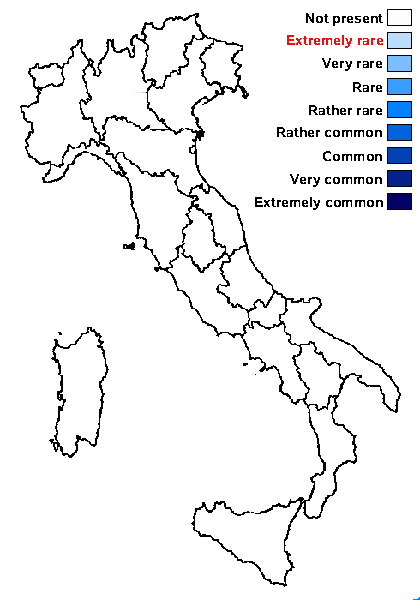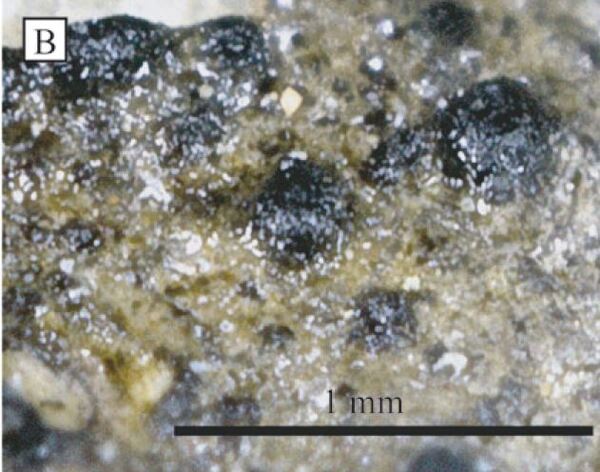Polyblastia quartzina Lynge
Rep. Sci. Res. Norw. Exped. Novaya Zemlya 1921, 43: 24, 1928.
Synonyms:
Distribution:
Description: Thallus crustose, episubstratic, irregularly and finely rimose, brown-green to grey-brown, smooth or finely granulose, forming small patches. Perithecia sparse, black, globose, 0.25-0.3(-0.45) mm across (in section), semi-immersed in the thallus, projecting with the upper third, often largely covered by a thalline layer. Involucrellum dimidiate, adpressed to exciple in upper part, diverging in lower part; exciple thin, colourless to pale brown in upper part, brown-black at base; hamathecium of periphyses and periphysoids, interascal filaments absent; hymenial gel hemiamyloid, I+ red (I+ blue at very low concentrations of I), K/I+ blue. Asci 8-spored, clavate, K/I-, fissitunicate, the wall thickened above, with an ocular chamber, dehiscent by extrusion of an endotunica to form a delicate rostrum. Ascospores submuriform, with 1-3 transverse septa and a single oblique longitudinal septum, hyaline, broadly ellipsoid, 11-13 x 6-9 μm. Photobiont chlorococcoid. Spot tests: K-, C-, KC-, P-, UV-. Chemistry: without lichen substances.Note: a species based on a type from Novaya Zemlya, found on moist siliceous rocks (quartzite); widespread in Eurasia but apparently rare; known from the Western Alps (France), to be looked for in the Italian Alps.
Growth form: Crustose
Substrata: rocks
Photobiont: green algae other than Trentepohlia
Reproductive strategy: mainly sexual

Predictive model
Growth form: Crustose
Substrata: rocks
Photobiont: green algae other than Trentepohlia
Reproductive strategy: mainly sexual

Predictive model
 INDEX FUNGORUM
INDEX FUNGORUM
 GBIF
GBIF


